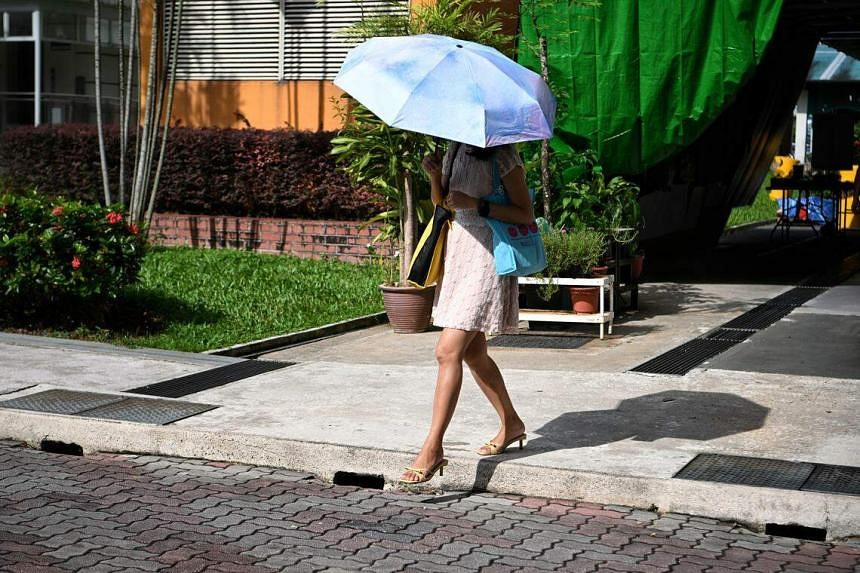SINGAPORE – When the temperature hits record highs, put on sunblock or try staying in the shade to cut the risk of skin damage from the sun’s rays, said experts.
While there is no link between the temperature and ultraviolet (UV) rays, there is a serious risk of sunburn and other dangers when the UV index is high, they added.
Dermatologists The Straits Times spoke to said a high UV reading of between eight and 10 is likely to cause unprotected eyes and skin to be damaged and burnt quickly.
Dermatologist Teo Wan Lin of TWL Specialist Skin and Laser Centre said UV rays cause oxidative stress, which forms harmful molecules that stress the skin and lead to signs of photoageing – a process where UV radiation quickens the signs of skin ageing – such as hyperpigmentation or darkening of the skin, irregular skin texture, wrinkles and collagen loss.
Dr Teo said: “It increases one’s lifetime risk of skin cancer, specifically if sunburns are sustained.”
In response to queries, the Meteorological Service Singapore said the UV index in May breached 10, just short of the extreme range, which is when it is above 11.
The UV index measures solar UV radiation on the earth’s surface. The lowest reading is zero, and a moderate UV reading is between three and five. In Singapore, the average daily maximum UV range usually is in the six-to-seven range.
The Met Service said that so far, there have been 53 days when the UV index exceeded 10 in 2023.
In the last 10 years, there were between four and 25 days in May when the UV index exceeded 10, it added.
It said: “The variation in the number from year to year is due to the combination of different factors that include air pollution, the amount of ozone in the atmosphere, cloud cover, time of the day and time of year.
“The air temperature does not affect UV radiation levels.”
More ozone leads to lower UV levels, and cloud cover helps reduce UV radiation, it said.
On average, the UV index is higher than 10 for the most number of days in March, when the sun in Singapore is most directly over the equator, and UV radiation is more intense, said the Met Service.
On March 2 and 8, the UV index went up to 13 – the highest for 2023, so far.
The hottest day of the year so far was on May 13, when the mercury hit 37 deg C.
Dr Eileen Tan of Eileen Tan Skin Clinic and Associates said severe sunburn, blistering and pain can be quite painful, and could require oral medication.
She said: “UV light damages the elastic fibres in the skin. When these fibres break down, the skin begins to sag and stretch, causing fine and coarse wrinkles.
“So while sun damage to the skin may not be apparent when you’re young, it will definitely show later in life.”
Dr Teo said people should try to stay indoors between 9am and 5pm, when the sun’s rays are at their most intense.
She said: “Wear a dermatologist-recommended broad-spectrum sunscreen with a minimum of SPF30 or higher as UV rays do pass through the windows.
“When outdoors, seek shade, wear sun-protective clothing with ultraviolet protection factor, broad-brimmed hat and UV-protective eyewear.”
According to Dr Tan, a simple way to gauge UV exposure is to look at your shadow.
She said: “If your shadow is taller than you are in the early morning and late afternoon, your UV exposure is likely to be lower.
“But if your shadow is shorter than you are, likely around midday, you are being exposed to higher levels of UV radiation. Seek shade and protect your skin and eyes.”


